Biology
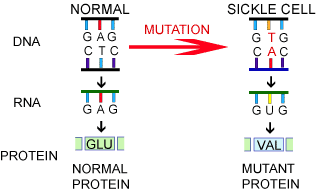 A gene mutation is a change in the sequence of nucleotides that may result in an altered polypeptide.
A gene mutation is a change in the sequence of nucleotides that may result in an altered polypeptide.
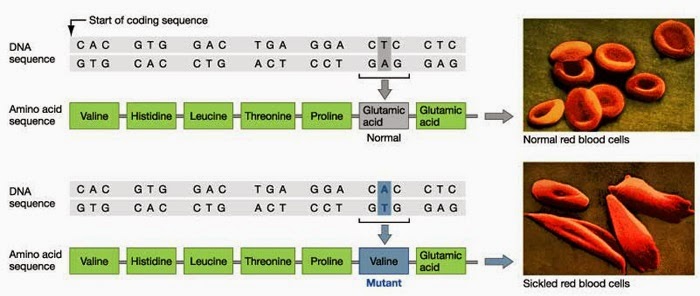
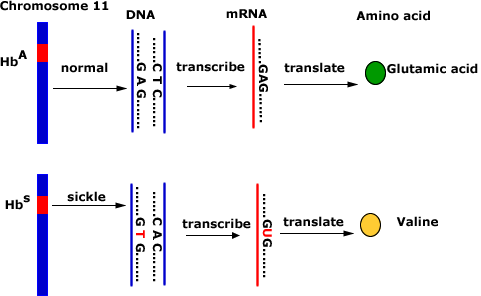
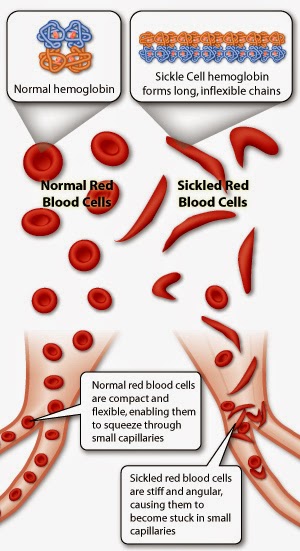
- Gene Mutation
A gene mutation is a change in one or several bases. A base may be added, deleted, or substituted with another base. This is caused often through the action of damaging chemicals, radiations, or through errors inherent in DNA replication and repair reactions....
- The Genetic Code Is Triplet
KEY TERMS:The genetic code is the correspondence between triplets in DNA (or RNA) and amino acids in protein. A codon is a triplet of nucleotides that represents an amino acid or a termination signal. Frameshift mutations arise by deletions or insertions...
- #37 Summary Of Genetic Control
1. DNA and RNA are polynucleotides, made up of long chains of nucleotides. 2. A nucleotide contains a pentose sugar, a phosphate group and a nitrogen-containing base. In RNA the sugar is ribose, and in DNA it is deoxyribose. 3. A DNA molecule consists...
- # 35 The Genetic Code - Protein Synthesis
The genetic code specifies the amino acids that are assembled to make polypeptides. The way that DNA codes for polypeptides is central to our understanding of how cells and organisms function. A polypeptide is coded for...
- # 33.2 Nucleic Acids And Protein Synthesis - Syllabus 2016
6.1 Structure and replication of DNA 6.2 Protein synthesis Nucleic acids have roles in the storage and retrieval of genetic information and in the use of this information to synthesise polypeptides. DNA is an extremely stable molecule that...
Biology
# 36 Gene mutation, sickle cell anaemia
 A gene mutation is a change in the sequence of nucleotides that may result in an altered polypeptide.
A gene mutation is a change in the sequence of nucleotides that may result in an altered polypeptide.A mutation is a random, unpredictable change in the DNA in a cell. It may be:
? a change in the sequence of bases in one part of a DNA molecule
? an addition of extra DNA to a chromosome or a loss of ONA from it
? a change in the total number of chromosomes in a cell.
Mutations are most likely to occur during DNA replication, for example when a 'wrong' base may slot into position in the new strand being built. Almost all of these mistakes are immediately repaired by enzymes, but some may persist.
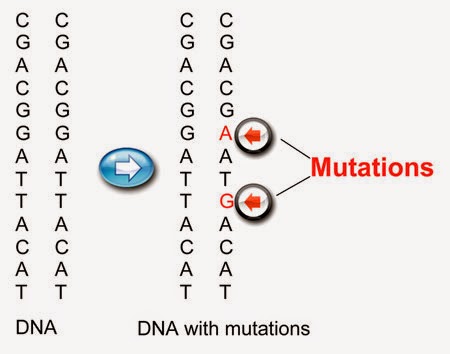 |
| Single point mutation. |
A change in the sequence of bases in DNA may result in a change in the sequence of amino acids in a protein. (Note that this does not always happen, because there is more than one triplet that codes for each amino acid, so a change in a triplet may not change the amino acid that is coded for.) This in turn may result in a change in the 3-D structure of the protein and therefore the way that it behaves.
Sickle cell anaemia
An example of a mutation is a change in the gene that codes for one of the polypeptides in a Hb molecule. In the genetic disease sickle cell anaemia, the gene that codes for the ? polypeptide has the base T where it should have the base A. This means that one triplet is different, so a different amino acid is used when the polypeptide chain is constructed on a ribosome.

The abnormal ? polypeptide has the amino acid valine where it should have the amino acid glutamic acid. The normal form of Hb is called HbA, the abnormal Hb is called sickle cell Hb (HbS)

These amino acids are on the outside of the Hb molecule when it takes up its tertiary and quaternary shapes.
- Glutamic acid is a hydrophilic amino acid. It interacts with water molecules, helping to make the haemoglobin molecule soluble.
- Valine is a hydrophobic amino acid. It does not interact with water molecules, making the haemoglobin molecule less soluble.
When the abnormal Hb is in an area of low oxygen concentration, the Hb molecules stick to one another, forming a big chain of molecules that is not soluble and therefore forms long fibres. This pulls the red blood cells out of shape, making them sickle-shaped instead of round. They are no longer able to move easily through the blood system and may get stuck in capillaries. This is very painful and can be fatal.

| Syllabus 2015 (d) describe the way in which the nucleotide sequence codes for the amino acid sequence in a polypeptide with reference to the nucleotide sequence for HbA (normal) and HbS (sickle cell) alleles of the gene for the ?-globin polypeptide; |
Syllabus 2016 6.2 Protein synthesis b) state that a gene mutation is a change in the sequence of nucleotides that may result in an altered polypeptide c) describe the way in which the nucleotide sequence codes for the amino acid sequence in a polypeptide with reference to the nucleotide sequence for HbA (normal) and HbS (sickle cell) alleles of the gene for the ?-globin polypeptide |
- Gene Mutation
A gene mutation is a change in one or several bases. A base may be added, deleted, or substituted with another base. This is caused often through the action of damaging chemicals, radiations, or through errors inherent in DNA replication and repair reactions....
- The Genetic Code Is Triplet
KEY TERMS:The genetic code is the correspondence between triplets in DNA (or RNA) and amino acids in protein. A codon is a triplet of nucleotides that represents an amino acid or a termination signal. Frameshift mutations arise by deletions or insertions...
- #37 Summary Of Genetic Control
1. DNA and RNA are polynucleotides, made up of long chains of nucleotides. 2. A nucleotide contains a pentose sugar, a phosphate group and a nitrogen-containing base. In RNA the sugar is ribose, and in DNA it is deoxyribose. 3. A DNA molecule consists...
- # 35 The Genetic Code - Protein Synthesis
The genetic code specifies the amino acids that are assembled to make polypeptides. The way that DNA codes for polypeptides is central to our understanding of how cells and organisms function. A polypeptide is coded for...
- # 33.2 Nucleic Acids And Protein Synthesis - Syllabus 2016
6.1 Structure and replication of DNA 6.2 Protein synthesis Nucleic acids have roles in the storage and retrieval of genetic information and in the use of this information to synthesise polypeptides. DNA is an extremely stable molecule that...
